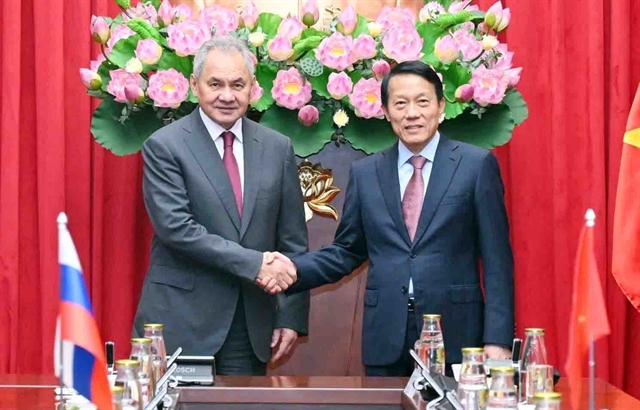 Society
Society

Việt Nam will work with international organisations to develop a population policy agenda at the highest level as the country looks towards becoming an aged nation, said Deputy Prime Minister Vũ Đức Đam yesterday.
 |
| Medical workers provide health checkup to the elderly. The country used to have a senior citizen of 60 years or above for every 11 Vietnamese back in 2010, which will reduce to one for only six by 2030. — VNA/VNS Photo An Hiếu |
HÀ NỘI – Việt Nam will work with international organisations to develop a population policy agenda at the highest level as the country looks towards becoming an aged nation, said Deputy Prime Minister Vũ Đức Đam yesterday.
The emerging Southeast Asian nation is known to have a rather young and energetic population, Đam said at a three-day biennial conference on the economic impacts of an aging population held in Hà Nội yesterday. Yet little were people aware that Việt Nam was soon to pass its golden population structure, where for every two or more people working there would be a dependent.
The country used to have a senior citizen of 60 years or above for every 11 Vietnamese back in 2010, which will reduce to one for only six by 2030, according to the Deputy PM.
“And if such a trend keeps on, there will be one senior for every four Vietnamese 50 years from now,” he said.
That would make Việt Nam a ‘super-aged’ nation where more than one in five of the population is 65 or older.
“If there are no changes to the population policy soon, the proportion of young and old people will be equal in the next 20 years,” Đam said.
It was essential that the Government managed to build a strong social security system to prepare for the fast aging population in advance, he said, noting that at the same time it should work out solutions to integrate advanced technology into production so that seniors can still work as much as they can despite their age.
The United Nations Population Fund (UNFPA) Regional Director for Asia and the Pacific, Yoriko Yasukawa, agreed that lifting the seniors’ burden towards society by maximising their contributions to the country would help to ensure a better future for the country.
Việt Nam is not outside the global trend of an aging population, particularly in the Asia-Pacific region where at least 1.2 billion people over 60 will reside by 2050. The figure, revealed at the conference, will be equal to about two thirds of the senior people around the world by that time.
According to HelpAge International’s Regional Director for East Asia and the Pacific, Eduardo Klien, demographic changes in the region were and are having remarkable socioeconomic impacts to Pacific-rim nations.
Developing policies to prepare for such changes are important to sustain economic growth and improve the quality of life of the people. – VNS




